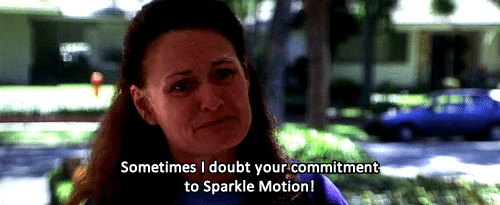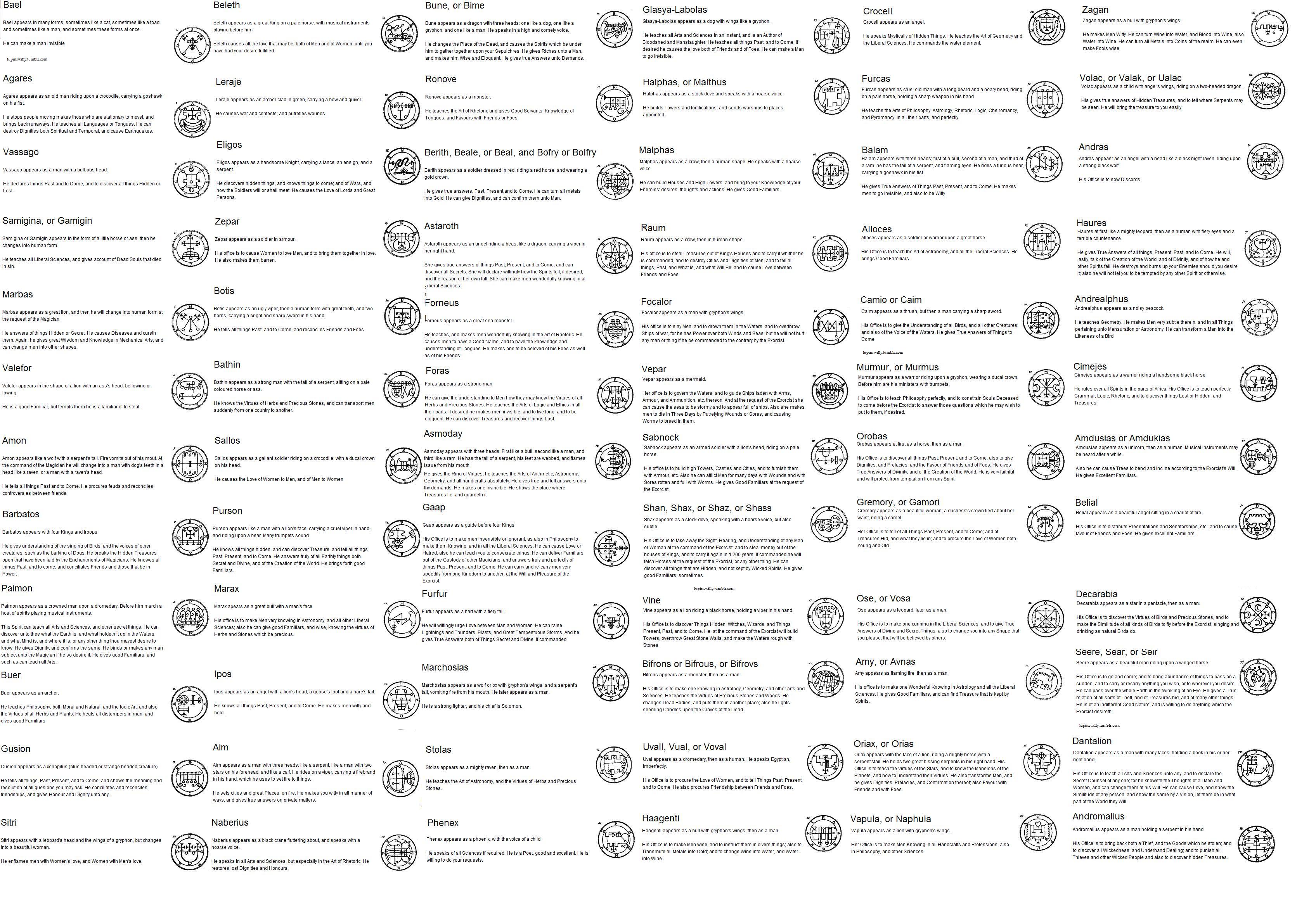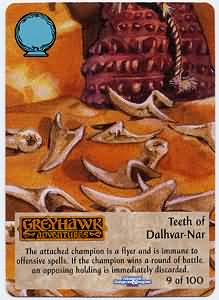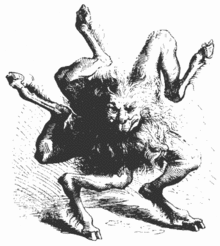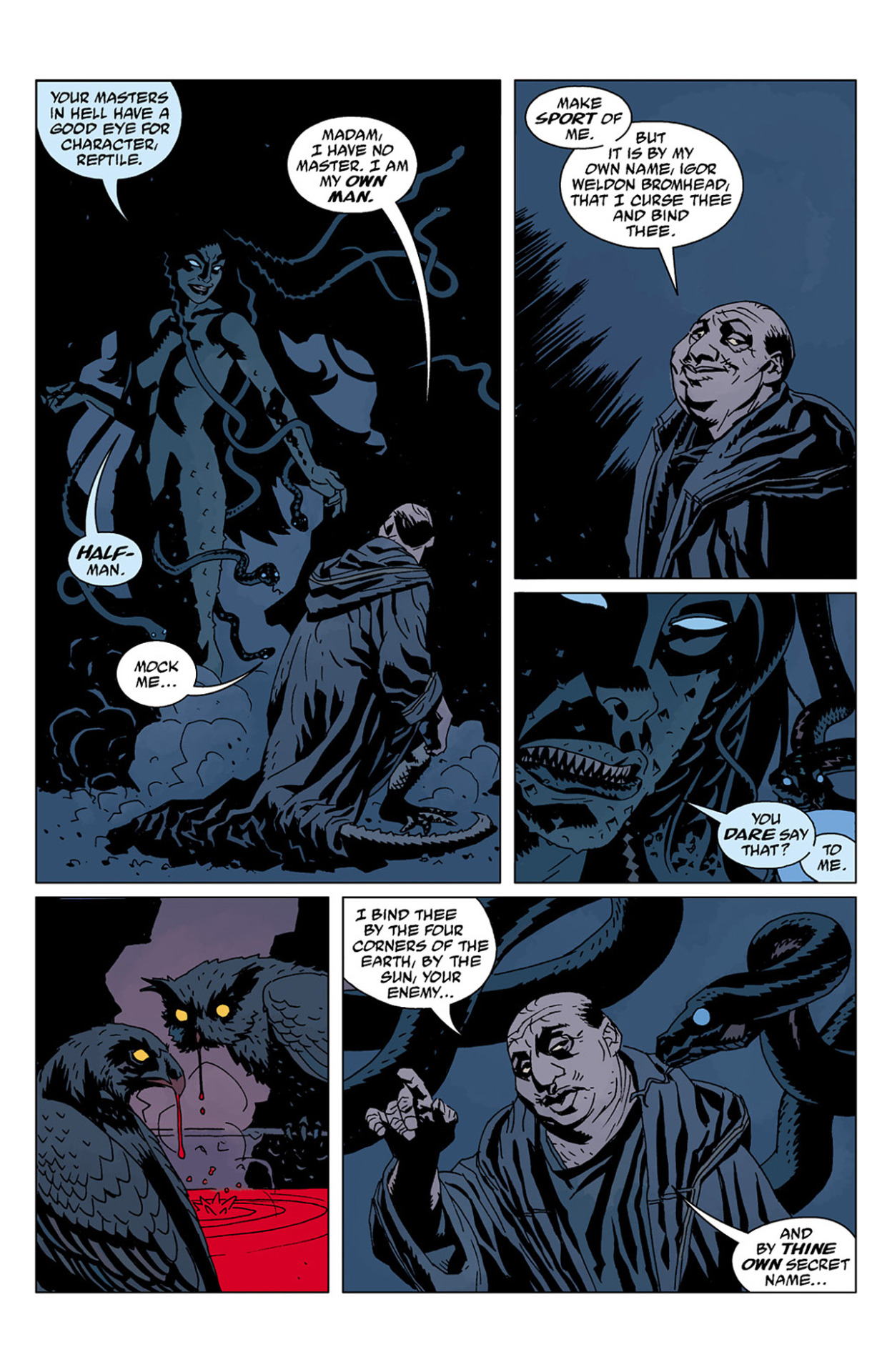Truename Magic

"It is a bitter and unrewarding chapter."
- Frank Trollman
AncientH:
The idea of a magical language, and the importance of names is older than dirt, and underlies a fair chunk of Western occultism back to at least the Sumerians. It's a concept which has been expressed in thousands of different ways and systems in fantasy stories (fuck, even the
Dune movie), and Dungeons & Dragons was no stranger to trying it's hands at it. D&D had always had the
power word spells and whatnot, and the first real attempt at a cohesive metamagic system in the game was
College of Wizardry, based entirely around a magical language. 3e got into the act with the Dark Speech in
Book of Vile Darkness, the Words of Creation in
Book of Exalted Deeds, various spells and invocations based off of those languages, feats expanding on the use of Draconic in
Races of the Dragon, the Illumians of
Races of Destiny, and I've undoubtedly forgotten quite a few more here and there. The point being that D&D already had at least three or four magical languages implemented different ways, so why did it need another one?
FrankT:
Don't forget Quells, the incorporeal undead that really hate clerics and have special dark words of power floating around their heads to cockblock clerics with. Not to mention
explosive runes,
sepia snake sygils, and so on and so forth. D&D has had really a lot of different kinds of magic words. When you think about it, the justification for magic scrolls is pretty much that magic runes have powers of their own. What it really
doesn't have is “true” names. That's just not a thing that people do in D&D land. Which is kind of a shame, really. True names wasn't just cool in Earthsea (although it was), it was cool in lots of stories, and it's a thing in a lot of magical traditions. Perhaps more importantly, if true names was a thing you could meaningfully distinguish people in your party from others, something that D&D has been
struggling with for some time.
AncientH:
You might recall that at the beginning of the book, I was surprised they had included references to some Dragon magazine articles (which, if I had ever read them, I have totally blanked on) - but I was more surprised by what they left
out, namely an article in Dragon Magazine #317 called "Truenames and Fetishes: the Power and the Peril" by Phillip M. Greeley. Now, this is very patently not the same system at all as truenaming in
Tome of Magic, and obviously Mr. Greeley's article didn't exactly set the world on fire...but it's really curious that they didn't at least give it a nod, and I can't shake the feeling that the designers at least read it and determined which parts seemed to almost work and which didn't.
FrankT:
The thing about the Truename Magic section here is that unlike the previous two chapters that were based on good ideas but designed incompetently, Truename Magic is based on an idea that is actually terrible. The concept is “What if spellcasting was a skill, and being more skillful at casting made you better able to cast spells?” That's the kind of thing that
sounds good enough that they tried it in True20, Epic Level Handbook, FantasyCraft, Iron Heroes, and a fuck tonne of other d20 hacks. But it's completely incompatible with a level-based system. It's completely incompatible with a level-based system in the specific manner that 3e D&D handles skills, but it's important to remember that it is also incompatible with a level-based system using
every other skill system it is possible to have.
See, any skill system it is possible to have is either going to have a 1:1 correspondence with level or it isn't. Those are literally the only two options. And if your skill system is exactly the same as levels, shifting spellcasting from level to skill is
pointless. While if your skill system
isn't exactly the same as levels, then setting spellcasting to “not levels” makes it
broken. There's no middle ground possible. The Truename Magic was fucked from a conceptual level long before they handed it to C-listers to try (and fail) to make something out of.
AncientH:
You can basically see the point Frank is making already when you consider Spellcraft checks, but I digress.
The introduction, which is nominally supposed to talk about truenames in the game and how to incorporate them at your table, is laughably bad. For example, here are some honest directives they give:
When you use a truename, actually use a truename.

"Fancy Man of Cornwood!"
Aside from the difficulty of real tongue-twisters, this just gets down to the level of telling people how to roleplay, which is not a good thing.
Consider being a multilingual translator and spokesman.

Yes, because having points in
one skill means that you're a natural for throwing your points into other, unrelated skills.
Know how object saving throws work.

That's just mean.
Unlike the other chapters, whose new terms basically ended at "binding" and "vestige", and "mystery" and "shadowcaster", Truenaming is complicated enough that they gave an entire mini-glossary, defining such D&D-specific terms as Lexicon, Truespeak, Truenamer, Truename Spell, Truename, Personal Truename, and Utterance.
FrankT:
The Truename Magic section is kind of gonzo. I don't know if the authors realized that they had been handed a directive that couldn't possibly work, but they don't really take their job very seriously here.
Tome of Magic, Truename Magic wrote:Saying “I daze the orc with my utterance; it's DC 18,” is a pretty ordinary thing – and you picked truename magic to set yourself apart from the ordinary. Exclaiming “I disrupt thee, khedalaévaurümihauî!” is something more appropriate for a truenamer.
Go ahead and spout cool-sounding mystic gibberish, and don't be worried if you can't replicate it.
Seriously. It says that. Basically, the subsystem doesn't really work and the authors tell you to just let your freak flag fly and go crazy. Yeah, the numbers might not add up, but you'll have fun trolling the people in your group, so whatever. 

 This is less encouraging
This is less encouraging.
The suggestions for playing the class are pretty nod-and-wink all around. They come right out and say that as a Truenamer people will expect you to be good at languages and diplomacy
even though the class doesn't actually do that, just because you have powers that are skinned as “language powers” and it would be
totally weird to the other players if you couldn't solve mundane language problems like translating Orcish or speaking to guards. The chapter is punctuated with “famous quotes” from truenamers,
which are all unpronounceable gibberish. After two rambling chapters that squandered good ideas with terrible writing and design, it's kind of refreshing to see a chapter where the author
knows he's been given an impossible task and has risen to the occasion by simply trolling the development committee as hard as possible.
AncientH:
The sample truenames appear to be a meaningless collector of letters and apostrophes, indicating that truespeak is a dialect of R'lyehian.
“Xenshenasha-prietokana’hazhulakhan!”
—Reversed utterance of essence of lifespark, a common execution technique for High Inquisitor Phar-Noghrio

"The High Inquisitor is in his study, and demands total silence, as well as a glass of milk and a plate of cookies."
FrankT:
There was a half-assed attempt to make personal true names be a thing, but it didn't really pan out. That kind of thing really has to be hardwired into the code of the game. There's even some attempts in the core rules (see:
gate,
planar binding,
trap the soul) to make personal names be a thing, but without any consistent application it just doesn't work. If there isn't any part of the game where people choose a secret name for their characters, you can't add a minigame to ferret out the secret name people have later. It just doesn't work.
 You have to actually have one of those before this event can happen.
You have to actually have one of those before this event can happen.
This chapter comes up with various ways to hide and protect your true name, which is all pointless, because no one has any fucking true names to begin with! Just as not putting your important files online is the ultimate protection from having Russian hackers steal your files over the interwebs, simply
not having a true name is pretty much ironclad protection from people finding out what yours is.
 It's not a tumor!
It's not a tumor!
As alluded to earlier, I think that the game would be better if it actually did have true names. It could explain why the king being dead might be an actual problem even though you're high enough level to raise the dead. It could formalize demon binding into the thing everyone actually wants. It could solve a lot of problems, actually. But it has to be ground floor. And the half assed excuse of “people totally have true names, but they don't know what they are and only true name casters actually care” thing this book tries doesn't work at all.
AncientH:
Agreeing with Frank here, the
idea of Truenaming (and magical language in general) is obviously present in D&D long before
ToM came out, and the game was running off sort of understood principles related to that long before this specific execution - the problem is, these Truename rules suck as written, and as Frank will go into in greater detail, in conceptual design as well. Honestly, I could probably fix Binding and Shadowcasting so that they were at least viable on the table (and only occupying at most one-third of their current space), but Truenaming is something that really needs to be implemented in the game at some level right from the beginning - not tacked on as an afterthought.
FrankT:
The central problem of Truename Magic is that it runs off a skill test in 3.5 D&D. Skill tests in 3.5 D&D have a lot of different bonuses that they may or may not get. The central level-based bonus is
ranks, which in the march from 1st level to 20th level increase by +19. The RNG is 20 numbers long, so without access to other bonuses, a test that a 20th level character has a 5% chance of failing is a test that a starting character has a 5% chance of succeeding. So in the time it takes other classes to go from fighting sewer rats with a stick to having screaming laser duels with evil gods, the skill system hasn't left the realm of the possible at all. But the other, more optional bonuses break the RNG in half. There are insight bonuses, luck bonuses, morale bonuses, enhancement divine bonuses, and others more obscure. But the big one, the one that completely skullfucks this premise all by itself, is the
competence bonus that you get for having magic crap on your body that improves skills. Those go up to +30. That's not a joke or a misprint. The difference between having a skill boost doohickey on your hand and not having one can be large as 50% more than the entire RNG
by itself.
 Honestly, it doesn't really matter how skilled she is.
Honestly, it doesn't really matter how skilled she is.
So the difficulty for using this magic is set crazy high. Without bullshitting your skill bonuses, you basically aren't going to be able to do it. The difficulty of affecting anything with your words (including yourself!) goes up by 2 every level. But as previously noted, your rank bonus only goes up by 1 every level. So if you don't get bullshit bonuses from somewhere, truespeaking starts not working very often and works less and less often as you go up in level. Of course, what actually happens is that if you even tried to use this system, job one would be breaking the bonus structure in half, and then the skill roll (and indeed, your character's nominal personal skill) would be mostly a formality.
AncientH:
We mentioned before that Vestiges and Essentia were basically designed so you didn't have to invest in a class to try them out, but Mysteries required a bit of dedication in that you actually had to level up in one of the two shitty classes that give access to Mysteries. Truenaming manages to do the worst of both of those worlds; Truenaming is just a skill that anybody can be trained in (although cross-class ranks makes it laughable that you'll do anything), but to actually do much of anything with it you're really going to need the Truenamer class. In keeping with the other two "core" 20-level classes in that book, the Truenamer gives you fewer overall schticks in fewer categories of schticks, while charging you the same price.
So where your Level 1 Binder can bind one of four vestiges to get crappy powers for the day, and the Level 1 Shadowcaster can use three cantrips three times a day each and a single spell once a day, the Level 1 Truenamer gets
one utterance at first level, which you can select from a list of five. That's supposed to be good because you can technically try to use that utterance as many times as you make skillchecks, but looking over the utterances it's hard not to feel insulted -
Defensive Edge: Grant ally +1 AC, or an enemy -1 AC and
Knight's Puissance: Ally gains +2 on attack rolls, or enemy gains -2 on attack rolls stand out to me especially.
And the class never really gels at higher levels, even if you get to them. You'd think they'd at least try to incorporate some of the "lesser truename" magic, give you some 1/day
power words or a free language-magic feet like Dark Speech or Words of Creation. Hell, if they just gave bonus Recitation feats like a wizard gets bonus feats,
that would be an improvement over the crappy basic Truenamer abilities "Knowledge Focus" and "Truenamer Research."
FrankT:
Truespeaking is divided into three categories, and every truespeaker gets to use the things that are basically spells at a level appropriate level in one of the categories. Then you start at 1st level in the other two categories when you get to higher level, which means you never ever get level-appropriate anything in the other two categories. This is really weird to me. It's really weird to me in that this is almost exactly the Iron Heroes Arcanist. It fails in almost exactly the same way and for exactly the same reason as the Iron Heroes Arcanist. It doesn't do the explosion fumbles of Iron Heroes, and it doesn't do Iron Heroes' warmed over feces version of spell seeds, but the caster skill check and the non-level-appropriate secondary and tertiary paths are straight Iron Heroes. They were garbage in Iron Heroes, and they are only slightly better here.
The thing that makes this really weird to me is that this is a Mike Mearls design. He made the Iron Heroes Arcanist, and he made it badly. The Truenamer is much cleaned up, but it's the same fucking thing. Mike Mearls didn't write this book! He's not credited anywhere. He got to lead the project to break down the Orcus Fighter, Paladin, and Swashbuckler into Tome of Battle, but
this is an earlier book testing different resource systems. He's not credited anywhere on Tome of Magic, but the truenamer is
obviously descended from a thing he wrote that was terrible. And the truenamer is still terrible. I have no idea what the connection is. Did Mike Mearls tell Andy Collins about the problems he was having with the Arcanist? Did Mike Mearls get hired in the first place because the Arcanist was too similar to a bad idea that they were working on in-house? I don't know. But the Arcanist came out a year before the Truenamer and is obviously the same thing and mostly fails for the same reasons.
AncientH:
Nobody cares about truenamers in the world, so I'll just mention that this chapter has what is maybe the worst art in the book so far. The background is all faded out dwarf runes on the edges, every single piece of art is subpar, and somebody set the wayback machine to 1992 and stole a bottle of the red-brown ink they used to make
Pages from the Mages.
The Prestige Classes are about what you might expect, once you'd come to expect them. Despite Truenaming being a skill and everything, it's only really of any fucking use whatesover if you're a spellcaster or a truenamer, and there's no version of Eldritch Knight or Spellsword for truenaming.
Worse, somebody seems not to have gotten the memo that the entire benefit of being a truenamer is using your utterances pretty much as many times as you can, so there's a Law of Resistance where using the same skillcheck-based spell-like abilities gets harder to use the more you use them.

Again, let's just check this against the Sorcerer: he has slots, and he can cast any spell he knows as long as he has slots to cast them. No hassle. The Truenamer can
potentially cast more utterances, but each time he tries to use one it gets harder to do it again - which means that your Level 1 Truenamer is likely to fail after one or two, unless they've already broken the RNG.
The Bereft is a character class dedicated to gaining the power to completely remove an entity from existence. Sounds good! But wait, there's a catch. First, it's a 5 level PrC. Second, it only works on a subject that's already dead (no, undead don't count). Third, each use costs 100 XP. Presumably even if you fail the Truename check. Fourth, there's still a fucking way to bring the asshole back. So while it might be half-decent from a storytelling standpoint, from a player's perspective you're better off scoping out the nearest volcano. MUCH more productive use of your time.
Brimstone Speaker is for good and/or Fire! divine casters who flunked the entrance exam for
Thaumaturgist school. For 10 levels, you get a 8 levels of divine spellcasting, the ability to
summon monster some critters you should already have on your list if you care about them, and caps off with a skillcheck-based 8d6 breath weapon which, again, gets harder to use each time after the first.
Disciples of the Word are a Monk/Truenaming PrC, designed for studious monks to graduate into instead of taking a terrible level in Truenamer. It lets them to continue to advance at hitting things while not gaining any utterances. It's unique in that it lets Monks waste
ki points Stunning Fist attempts on Truenaming skillchecks to do stuff. This is especially bizarre in that some of the abilities replicate what you'd get if you stayed single-class Monk, so you have even
less reason to pursue this PrC. Indeed, the only real benefit of the class is that if you
have spammed the Truespeak skillcheck, you can use these abilities (and Stunning Fist uses) to swap out a skillcheck for a Reflex save or counter a spell - but then if you've done that you're still stuck in a sub-par unarmed caster against somebody that probably has more spells than you have Stunning Fist uses per day. The ultimate power is a
DC 50 check (and daily use!) to gain an additional move action during a round. Whoo.
Fiendbinders are the PrC everyone cares about, because their signature ability is relatively open-ended - you can use Truenaming to bind fiends. Literally, this is what the
planar ally spells probably should have been, but if you've cheated the RNG enough that you can swing a DC 50, you're pretty much set to play an old-school demonologist, summoning up demons and devils and ordering them to do whatever the fuck you want them to do, by the power of their name.
There are no Bard/truenaming PrCs,
and I don't fucking care.
FrankT:
Tome of Magic, Truename magic wrote:Successfully making the recitation dispels any fear, rage, despair, or other emotion-based effects on you. If you're frightened or panicked, this recitation won't help you because you won't be able to take the full-round action required to make the recitation.
 Lots of defenses and counters that require actions in D&D are actually useless for this exact reason. But this chapter is so
Lots of defenses and counters that require actions in D&D are actually useless for this exact reason. But this chapter is so self aware
about how shitty it is that it actually specifically calls that out.
AncientH:
Truename Feats are the same specialized category of metamagic trash as you had to deal with in the other sections; you'd think that after writing the third Empower XXX feat somebody would have figured out this was not a productive use of pagespace.
Around level 2, Truenamers can start picking up Recitation feats, of which Frank just provided an example. Honestly, I don't really see the point of these things because they're just effects that
should be utterances, and you should get more of them. Really, when you take this chapter apart, it doesn't matter if you get the ability to do <stuff> from a prestige class or an utterance or a feat, because what is boils down to is "Okay, now you can make a skillcheck to do this too." The source is completely unimportant; it's not even got the basic distinguishing factor between spell-like or supernatural abilities.
FrankT:
The first category of things that are basically spells in the truename section are all
reversible. Which means that you can use them either as a buff or as a debuff. So you could have
defensive edge which can be cast on a friend to give them +1 AC for five rounds, or cast in reverse on an enemy to give them -1 AC for 5 rounds. I'm not actually exaggerating there, the utterance really is that bullshit. In fact,
most of the utterances are extremely bullshit. At fourth level, you can learn to spend an action to make a roll to double the threat range of a weapon for five rounds. Not five hours. Not even five minutes. Five
rounds. The book really seems to expect us to spend a whole round in the middle of combat putting up a buff that only affects one in twenty die rolls and only lasts five rounds. That's a thing that they keep offering in various forms. They can't
really expect us to use shit like that, can they?
 Well. That makes more sense.
Well. That makes more sense.
AncientH:
At this point, everyone who is meditating on Truenaming should be asking: "But Frank, Ancient one, what about
silence?" The book answers this in a section called
The Universe Hears You. Long story short, while all your spell-like abilities have a verbal component and can be defeated by antimagic and dead magic, you can still use Truenaming in an area of magicla
silence because the universe is listening (however, you still have a 20% chance of failing anyway).
The lesson there being that if you see someone trying to rap out a truename, gag them.

FrankT:
One of the central ideas here is the idea that you can voluntarily roll against a larger DC to get a better effect. Sometimes this is as simple as letting you cast twice a turn if you can beat the normal difficulty by 20. You'll note of course, that 20 points is literally the entire RNG, so if it is even possible for you to make that check you can't possibly fail the unaugmented one. In order to break the RNG that badly, you have to be pulling bonus fuckery on a rather epic scale, so this book is pretty much assuming that you are basically cheating if you intend to play this class at all. If you read class guides for this heap, everyone else is making that assumption as well.
The Truenamer doesn't have traditional usage limits per day. Every time they succeed in casting one of their nearly spell thingies, the DC to use it again goes up by 2 during the day. So breaking the skill RNG by bonus whoring not only lets you do bigger things with your spellish doodads, it also gives you more uses per day.
Also, when you first use your utterances, you'll be able to reliably augment them to do whatever they can be augmented to do, and after you've used them a bunch of times, you'll be forced to use them at the basic level. So you are actually required by law to lead with your best effects and then dribble out bullshit later in the day.
And this would all be extremely broken on first principles and we'd be super angry if the spell-list itself wasn't ten pounds of shit in a five pound bag. Which it is. At 15th level you finally get access to a mighty word of making... that lets you change what metal a weapon counts as for short periods of time. I think that's a 2nd level Cleric spell that all Clerics just ambiently know automatically and don't care because even as a 3rd level character that shit isn't important. At character level 15 it's a joke.
AncientH:
After the lexicon, there's a list of Truename Spells. These are spells with a Truename component, which means you could well be making a Spellcraft, Truenaming, and Concentration check, and not always against the same DC. Most of these aren't particularly special, and some are just re-treads of spells or powers from older books - the 9th-level cleric spell
Word of Genesis for example just creates a demiplane, and is based on an arcane spell from
Manual of the Planes with an added fiddly Truename component.
The most important spells are probably
Expunge the Supernatural - which, for a price, lets you permanently strip away one of a critter's supernatural abilities - and
Ritual of Renaming, which basically shits over you if you have a truename memorized. Sorcerers and Wizards get the best selection of the lot, including the 9th level spell
Unname which is like that 5th-level PrC ability, except it works on living and undead critters so it is
much more useful.
Also included here are the
Truename Binding spells, which are basically slightly shittier versions of the Fiendbinder class feature...but only slightly. Remember kids, arcane spellcasters rule D&D3.+ for a reason: everything you can do, they can do too - and probably better.
Truename Magic Items are another bag of shit. You can probably stat the no-brainer one out in your sleep: enhancement bonus to Truespeak check. You'd expect something that gave you free utterances or free metamagic on utterances, but those are lacking. Instead, you get some vague guidelines on making potions based on utterances, and being told that your spells and wands based on utterances and truenames only work against the specific truename you used when you cast the spell. Man, that's some really bad vendor trash.
The first artifact is the
book of true binds, which sounds like it should be a crossover item with the Binder/vestiges, but really is just a
book of infinite spells that replaces "spells" with "specific critters and
greater true binding effect." Sort of a Pokedex.
The second (and last) artifact is a book that reveals to the reader their truename. Whoo.

Amazingly, the chapter still isn't over, because we get a couple Truename-based critters. Unlike the critters in the first two sections, these actually have abilities related to truenaming
and are in what by this point in the devcycle was the standard format, with little subheaders about using them in Eberron and the Forgotten Realms.
Then there are the organizations. For our sins. I'm going to point out one of the "benefits" listed to belonging to one of them:
the Collectors pay a bounty on newly discovered collections of truename lore, usually 50% of its value, but sometimes up to 75%.
This is an economics point that has irked many a player: not getting list value for stuff. Partially, it's because you're dealing with merchants, and they need to make a profit too - so if the list price is 10 gold, they can't really buy it from you for 10 gold unless they turn around and sell it for 12 gold, and then they're over market value. So I don't mind selling horses and armor and shit to merchants for half list value. Less then half? Go fuck yourself.
But these guys here - they're the end user. It's like ebay, where you're selling direct to the consumer. You EXPECT them to pay the list price, maybe even play it up for a premium. If Mister Cavern says your
Big Bumper Book of Truename Jokes is worth 500gp, you're damn well not going to be happy getting 250 gp for it - it's not like there's a lot of demand for that thing now is there?
There are some "truename sites," but my DOGAS is at an end, and some of the stats on the monsters look decidedly pencilled-in. I'm pretty sure there are no stats for non-golem "Crystal Statues" anywhere in the MM.
The actually did an errata page for this book, but it didn't really address any of the many mechanical faults.
And that's the book.
FrankT:
I think my biggest complaint about the theme here is that all the words of power are basically level-based. It seems like the kind of thing that you'd be running around learning during your adventures and collecting like Pokemon or Blue Mage powers. But it's not. These are just powers you get for leveling up. There is really no attempt made to tie the “learning secret words” skinning to the power accumulation process. If you thought there was one type of caster who deserved to be able to learn new powers by finding and reading an old book – this would be the one. But you can't. Because fuck this book.
All told, I can't help thinking that this chapter was written to troll the development committee. Someone pulled the short straw and had to design around an idea that honestly could not possibly work. And they produced a chapter that is actually hilarious. I really hope that this is intentional comedy aimed at demonstrating what a fucked concept this is rather than the unintentional comedy of someone whose design skills are so poor that the things they think are cool read like parody.









